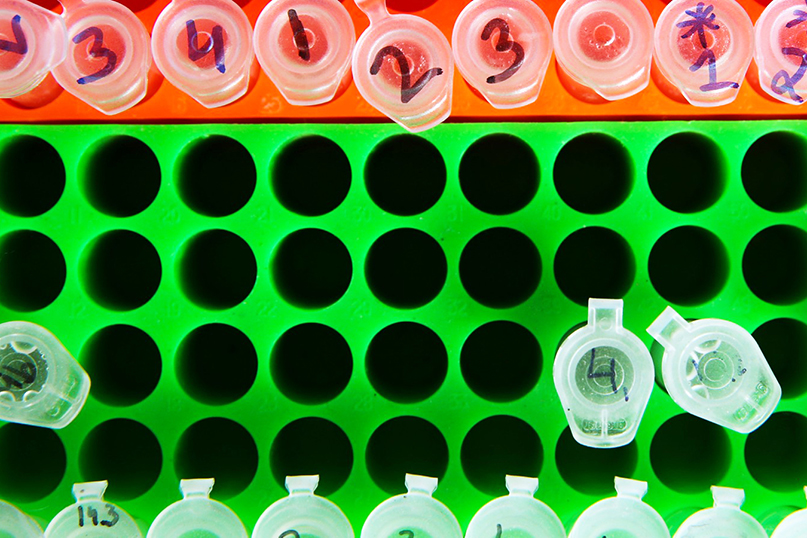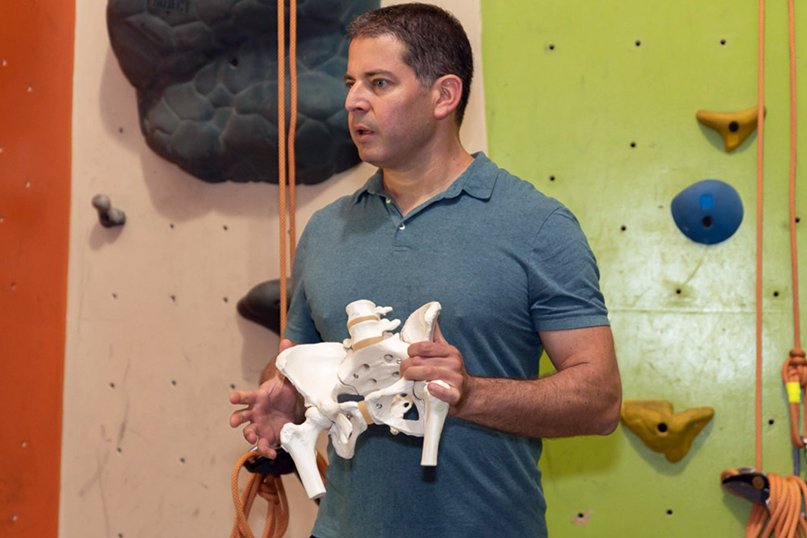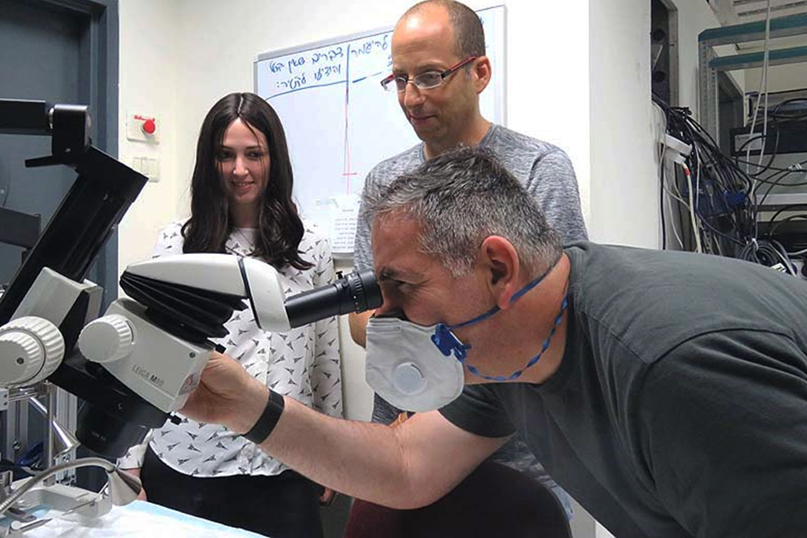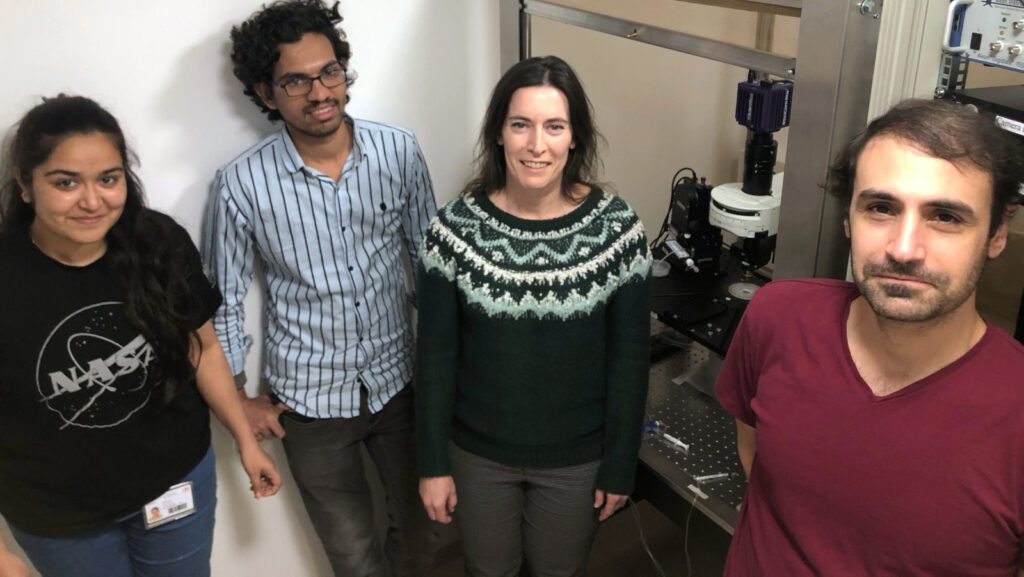
By Abigail Klein Leichman
It was in1917 that James Parkinson first described the syndrome now known as Parkinson’s disease – a complex, progressive neurological disorder affecting up to 10 million people. And it is fast growing in prevalence worldwide.
The disease is most often diagnosed in people over 60, more often males. Classic symptoms include tremor in about 60 percent of cases, rigidity, poor posture and slow movement.
But several decades before diagnosis, subtler symptoms like sleep disturbances and loss of smell often appear together with constipation and erectile dysfunction.
This happens because clumps of alpha-synuclein protein are aggregating in the brain and autonomic nervous system, damaging dopaminergic (dopamine-producing) cells governing motor control, among other functions. Loss of dopaminergic cells eventually causes the classic Parkinson’s symptoms.
Alpha-synuclein clumping can be triggered by aging, genetic mutations, conditions such as diabetes and hypertension, environmental toxins like pesticides and lifestyle factors like smoking, exercise, diet and mood.
Worldwide, about 10% of cases have a genetic basis. While Israel’s rate of Parkinson’s is no different than in other countries, the percentage caused by genetic mutations is much higher.
“In Israel among Jews of Ashkenazi heritage, 37 percent of Parkinson’s cases are genetic,” says international expert Prof. Nir Giladi, chairman of Tel Aviv Medical Center’s Neurological Institute and co-director of the Aufzien Family Center for the Prevention and Treatment of Parkinson’s Disease opened in June 2019 at Tel Aviv University.

“About 10% of Israelis carry genetic mutations that increase Parkinson’s risk. Having a parent with Parkinson’s increases the risk three times,” says Giladi, who’s treated about 20,000 Parkinson’s patients over 30 years.
“Israel’s high rate of genetic Parkinson’s provides an opportunity to make Israel a global hub for research and development,” he says.
Some earlier breakthroughs in Parkinson’s research and treatment came out of Israeli labs.
Technion Prof. Moussa Youdim, for example, helped develop Azilect and Selegiline for treating Parkinson’s symptoms. His current company, Youdim Pharmaceuticals, is ready to commercialize the first-ever blood test for Parkinson’s diagnosis and prognosis; and is developing novel multi-target neuro-restorative drugs that can cross the blood-brain barrier.
Parkinson’s disease research is happening at every Israeli university, with a particular focus on prevention.
“The aim is to prevent the disease by detecting markers for these genes years before symptoms appear. I think it’s doable,” says Giladi.
Read on to learn more about the latest Parkinson’s research in Israel.
The Aufzien Family Center for the Prevention and Treatment of Parkinson’s Disease
More than 40 scientists study molecular, genetic, physiological and genetic elements of Parkinson’s disease at Aufzien.
“We provide an organizational and funding umbrella so researchers and clinicians can work together and find solutions faster,” says co-director Prof. Karen B. Avraham, a specialist in genetic deafness research and vice dean of Tel Aviv University’s school of medicine.
Giladi says Aufzien “is quite a unique center combining the most advanced basic research at the university with clinical research at Tel Aviv Medical Center and community outreach through the Israel Parkinson Association to provide knowledge, awareness and country-based research.”

The center’s new website invites first-degree relatives of genetic Parkinson’s patients to register, helping researchers develop a scoring system for risk and expected onset of symptoms.
“In the next 10 years, we hope to have tens of thousands registered and follow them prospectively,” Giladi says.
“For now, we are suggesting how to modify their lifestyle to lower risk. Exercise cuts risk 30%. A good night’s sleep, improved mood and a Mediterranean diet all have an impact,” he says.
“In the future, we hope to offer a vaccine or other intervention to protect them from further progression. Some genes decrease the risk of Parkinson’s disease, and if we can identify them, we can develop drugs using the same protein.”
Giladi says some 150 Israeli startups are developing technologies to help prevent, stop or even cure Parkinson’s. The Aufzien Center also has close ties to the Michael J. Fox Foundation for Parkinson’s Research in the US.
On April 29, the Aufzien Center is partnering in the first Israel Parkinson’s (virtual) Conference bringing together startups, researchers, physicians, allied health therapists, and patients and families for therapeutic activities and scientific updates.
The dope on dopamine
“Parkinson’s disease is defined by degeneration of dopamine-producing neurons. That’s the pathological hallmark,” says Dr. Claude Brodski, a renowned Parkinson’s researcher at Ben-Gurion University of the Negev.
“For many years I’ve been interested in the embryonic development of dopamine producing nerve cells in the brain. My motivation was driven by the assumption that studying the origin and history of these cells will help us to better understand why dopamine-producing cells degenerate in Parkinson’s disease and how we can prevent it.”
Last November, his lab published a paper in the journal Brain demonstrating that bone morphogenetic proteins (BMPs) prevent the degeneration of dopamine-producing neurons in Parkinson’s disease animal models. This indicates the possibility that BMPs could be novel Parkinson’s disease drug candidates.
“In Parkinson’s disease, there are many drugs that treat symptoms but no disease-modifying drug,” Brodski tells ISRAEL21c.
“Based on our findings in these animal models that BMPs could stop the progression of neurodegeneration, we’re working hard to bring it closer to the clinic.”
Predicting Parkinson’s
Last June, a team of neuroscientists from Bar-Ilan University was one of four winners of the Michael J. Fox Foundation and Sage Bionetworks BEAT-PD data competition seeking new methods to predict Parkinson’s disease severity.
Prof. Izhar Bar Gad and his Neural Interfaces Lab approached the problem by applying signal-processing methods to smartwatch and smartphone sensor data. The results were then used in machine-learning models to allow for patient-specific characteristics.
The lab’s long-term goal is to use the interaction between computerized systems and the central nervous system to better understand neural disorders and to create electrophysiological treatments for symptoms.
In the University of Haifa electrophysiology lab led by Shani Stern, induced pluripotent stem cell (iPSC) technology is used to create neuron cell lines derived from genetic and non-genetic Parkinson’s patients.
Observing these nerve cells as they develop and age, the team looks for common traits of different types of Parkinson’s disease as well as the roles of various genes in the process.

Stern has seen pathological changes, such as a reduction in synaptic connectivity between neurons, occurring before a patient would show symptoms.
“Parkinson’s disease patients have a severe neuronal cell death that is more specific to areas in the brain that are compacted with dopaminergic neurons,” she says.
Stern is growing 3D structures that resemble one of these brain areas as a novel platform for testing possible treatments such as dopamine receptor modulators.
She aims to build an algorithm that could predict disease onset and severity at the pre-symptomatic stage.
Mental imagery
Amit Abraham of the physiotherapy department at Ariel University has a new Mental Imagery and Human Embodied Potential lab studying how different types of mental imagery help rehabilitate patients with a variety of physical conditions, and enhance performance of dancers and athletes.
“For Parkinson’s disease rehabilitation, mental imagery is an innovative and promising tool,” he tells ISRAEL21c.
“Parkinson’s is a multifaceted condition mostly known for causing slowness of movement, rigidity, balance dysfunctions and resting tremor. But about 60% also have sensory and cognitive deficits that are less talked about. We thought mental imagery would address these deficits in addition to the motor ones,” he tells ISRAEL21c.
During his postdoc at Emory University School of Medicine, Abraham developed a pilot intervention for people with Parkinson’s disease based on the Franklin method of dynamic neurocognitive imagery. His goal was to correct distorted mental representations of the body that can worsen motor and cognitive deficits.
“I focused on the pelvis, spine and lower extremities. For two weeks, five sessions per week for two hours a day, people with Parkinson’s disease did a dynamic neurocognitive imagery protocol that included movement and imagery. We showed a wide range of beneficial effects for both motor and non-motor symptoms.”
Results were published in Neural Plasticity in 2018 and in Complementary Therapies in Medicine in 2019. Abraham is now working on developing a set of protocols.
Meanwhile, Bar-Ilan researcher Adam Zaidel is studying how sensory augmentation devices or sensory retraining can help Parkinson’s patients overcome their deteriorating visual perception of self-motion.
This article is reprinted with permission of Israel21c.org.
Scientists believe constipation can be early sign of Parkinson’s disease
By Brian Blum
If you suffer from constipation, it might be a sign of early Parkinson’s disease.
Researchers from the Hebrew University of Jerusalem and Goethe University in Frankfurt, Germany, have hypothesized that constipation – a common although not usually discussed non-motor symptom of Parkinson’s – could predate diagnosis of the neurological disease by up to 20 years.
That’s important because there are currently no therapies capable of stopping the progression of the Parkinson’s. However, if it is diagnosed early enough, scientists hope that certain therapies that have proved unsuccessful later on in the disease might work to at earlier stages.
Parkinson’s involves the buildup of tiny deposits of protein waste within brain cells called Lewy bodies (named after Dr. Friedrich Lewy who first discovered them in 1912). Lewy body buildup appears to be linked with specific non-motor symptoms of Parkinson’s including anxiety, sleep disorders and the loss of the sense of smell.
Scientists have proposed that Lewy bodies kill some of the brain cells that control the healthy functioning of different parts of the body, including the gastrointestinal tract.
Because Lewy bodies are clinically inaccessible and can’t be studied directly in the brain, scientists have had to look for related symptoms – like constipation. Lewy bodies may lurk in the brain for many years before diagnosis.
The Hebrew University team, led by Prof. Joshua Goldberg of the Department of Medical Neurobiology, over-expressed a protein called alpha-synuclein in the brain cells of laboratory mice. Alpha-synuclein controls gastrointestinal motility; it is also the main constituent of Lewy bodies.
The result was that the over-expression of the protein caused the mice brain cells to shrink and their electrical activity to slow down, directly affecting the physiological properties that lead to constipation. The researchers concluded that it is likely that this is also the process that occurs in humans in the early stages of Parkinson’s disease.
“As far as we know, this is the first time that anyone has described a causal chain of events connecting between how alpha-synuclein protein impacts brain cells and the early symptoms that we have long known predate this disease,” Goldberg says.
While the research is still hypothetical for humans, Goldberg is enthusiastic.
“Consider a 55-to 60-year-old patient suffering from constipation,” he notes. “We may someday design a test based on the neural changes we discovered to determine whether there is a neural factor at play which could hint to Parkinson’s… one day in the future we are confident that we will be able to identify a variety of biomarkers – including physiological ones, like the one we propose – that will allow us to definitively diagnose the disease far earlier than we are currently able.”
The results were published in March 2021 in the journal Science Advances.
This article is reprinted with permission or Israel21.org.
Main Photo: Tubes at a laboratory at Hadassah Hebrew University Medical Center. (Photo by FLASH90)









 Southern New England Jewish Ledger
Southern New England Jewish Ledger












